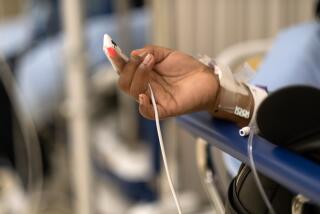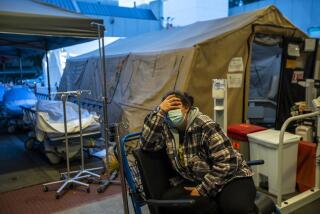A coronavirus ward? How U.S. hospitals are preparing for this new threat
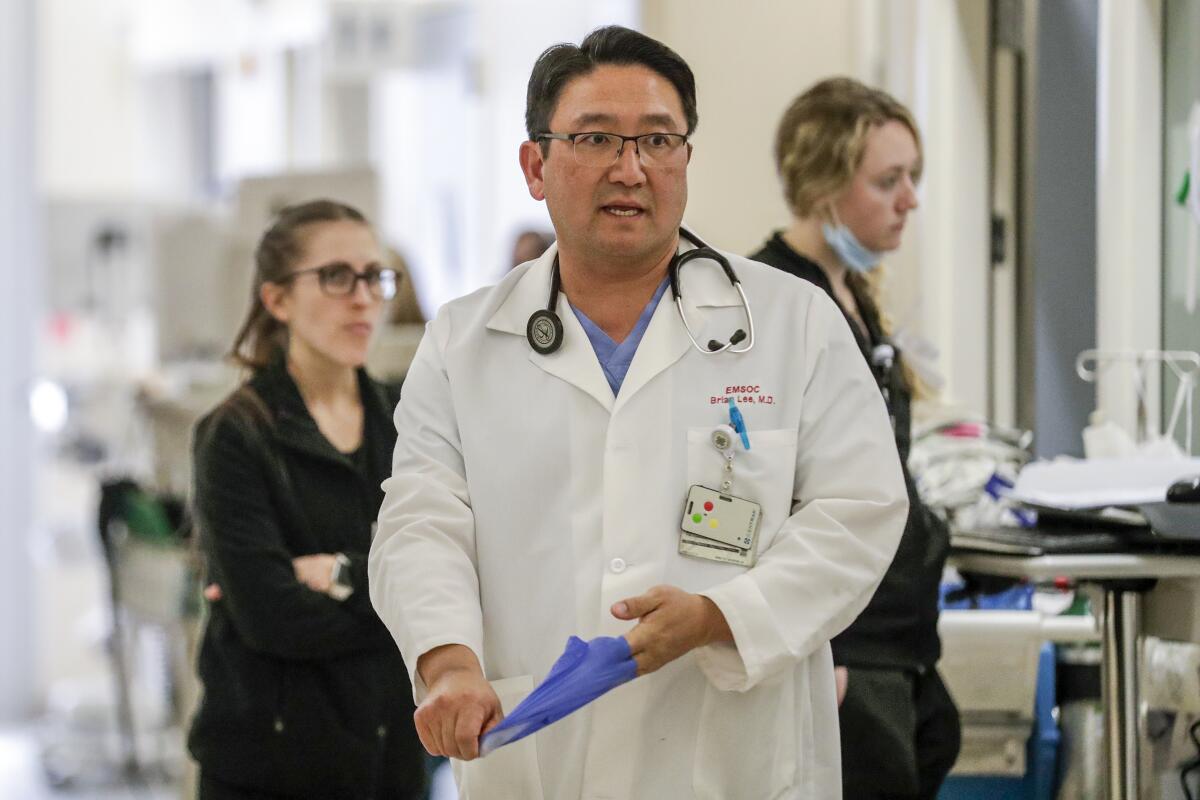
- Share via
U.S. hospitals are stocking up on gowns and goggles and holding refresher courses in infection control amid a growing outbreak of a novel strain of coronavirus that has already killed more than 1,360 people in China.
Since it began spreading last year, the coronavirus known as 2019-nCoV has prompted the World Health Organization to declare a global health emergency, U.S. officials to strongly advise against travel to China and some experts to predict a worldwide pandemic.
In the United States, just 14 people have been diagnosed with the coronavirus so far, though officials say they expect those numbers to rise. Hundreds of people have already shown up at American healthcare facilities with symptoms of the virus, forcing staff to don face masks and put patients in isolation rooms while awaiting test results.
In addition to the 14 people confirmed to have the virus in the U.S., 413 others have been tested for it; 347 tested negative, and results are still pending for 66, according to the U.S. Centers for Disease Control and Prevention. The virus’ symptoms, such as fever and cough, resemble those of the flu, which is in the height of its season in the U.S.
So far, the virus does not appear to be any more contagious than the flu or a cold, though scientists are learning more as cases mount. Because of the ever-evolving situation, the CDC is recommending that doctors and hospitals adopt a “cautious approach” when treating coronavirus patients in their facilities.

This is how that approach would play out if you visited a hospital to be treated for the coronavirus.
Step 1: Triage
Patients suspected of having the coronavirus are required to wear face masks and be placed in a separate room away from other patients while they await treatment. Because the virus can travel up to six feet in the air when someone coughs or sneezes, the CDC recommends maintaining at least that distance between the patient and all others to prevent the spread of infection.
“If you have traveled to China, please let us know immediately, even before you walk into a crowded waiting room,” said Dr. Brian Lee, emergency department medical director at St. Joseph Hospital in Orange. “We can’t read minds.”
A doctor then interviews the patient about their symptoms and travel history. Patients must meet specific criteria to qualify for testing, including travel to China in the last 14 days.
Patients are typically admitted to the hospital for treatment while they await results of the test, which is usually done through a nasal swab. In some cases, patients with mild illness can self-quarantine at home.
Step 2: ‘Negative pressure’ isolation rooms
Admitted patients are placed in “negative pressure” rooms, which keep air from seeping out into the rest of the hospital. The air from these special rooms is eventually released outside instead of being recirculated through the hospital.
Such rooms are typically used for patients with diseases such as tuberculosis and measles. They are standard in hospitals, unlike the special chambers some facilities set up to handle Ebola cases in 2014.
“To the patient, it looks exactly like any other treatment room,” said Dr. Michael Mesisca, emergency department medical director at Riverside University Health System Medical Center.
The Riverside hospital, which has been receiving people quarantined at March Air Reserve Base, has tested patients for the coronavirus but has had no tests come back positive, he said.
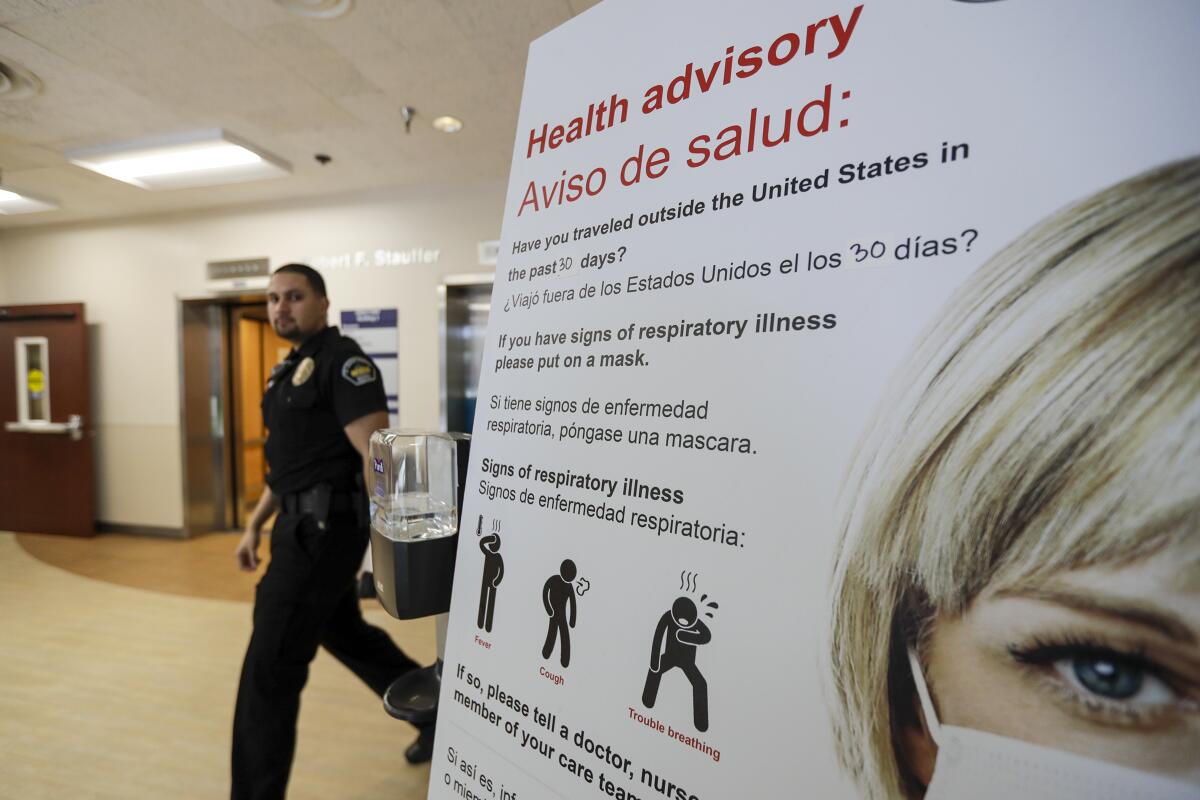
Step 3: Keeping staff safe
All healthcare personnel who interact with infected patients wear gowns, gloves, goggles and masks. Though the coronavirus isn’t believed to be more contagious than the flu, scientists don’t know everything about it yet.
“We’re using what the CDC likes to call an abundance of caution,” said Dr. Shira Doron, an infectious disease specialist at Tufts Medical Center.
In San Jose, five healthcare workers at Good Samaritan Hospital were put on two-week leave after public health officials determined they had contact with a confirmed coronavirus patient.
With suspected and confirmed coronavirus patients, staff members who can enter the room are limited to the patient’s doctor and nurse. Staffers keep a log of everyone who enters the room. Patients aren’t allowed visitors and are encouraged to communicate with their loved ones by phone or video chat.
Hospital workers don’t typically wear face shields or goggles when treating flu patients, but otherwise the precautions are not too different from caring for people with seasonal influenza. Many other diseases that hospitals regularly treat require these precautions, Doron said.
“This isn’t something very out of the ordinary for us,” she said.
Step 4: Treating the patient
There aren’t any treatments specific to this novel coronavirus, so doctors do what they can to alleviate a patient’s symptoms, which could include administering IV fluids and monitoring lung function. More severe cases may need to be put on a ventilator to help them breathe.
Positive test results do not change a patient’s treatment plan because doctors are already treating the symptoms, they say.
Step 5: Calming other patients
Hearing that coronavirus patients are in the hospital can be scary for other patients and their families.
Last week at Rady Children’s Hospital San Diego, a 3-year-old girl and her father were admitted as suspected coronavirus cases after they fled China last week. Both have since been cleared and discharged.
Dr. Nicholas Holmes, the hospital’s chief operating officer, said staff members emphasized that they were following proper hygiene protocol and doing everything possible to limit the spread of the virus. He said they also reminded patients and their families that the flu is a bigger concern than coronavirus.
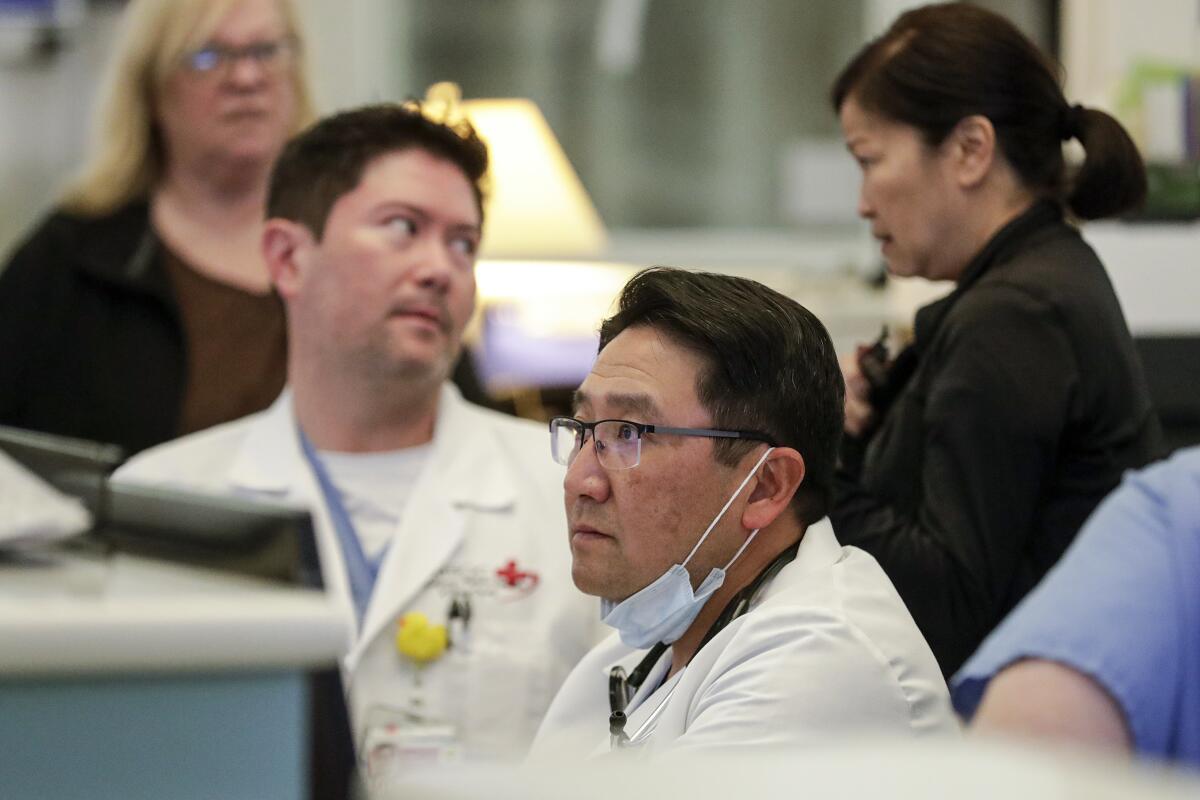
“We always have to address those concerns for parents,” he said. “It’s really educating the families about what coronavirus is, as well as what are the other infectious diseases in the community at large.”
Lee, of St. Joseph Hospital, agreed that the flu remains a larger threat than coronavirus for Americans and requires more hospital resources as influenza patients continue to seek treatment.
“Our main ask to the public is: Don’t panic,” he said.
More to Read
Sign up for Essential California
The most important California stories and recommendations in your inbox every morning.
You may occasionally receive promotional content from the Los Angeles Times.
